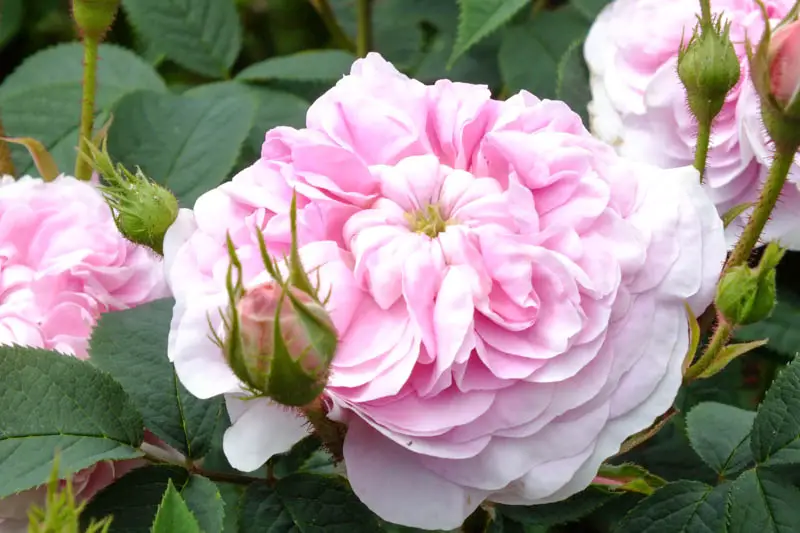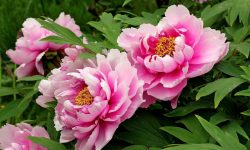Roses are often called the queens of the garden, admired for their elegance, fragrance, and timeless charm. Yet, keeping roses healthy and blooming year after year can feel like a challenge for many gardeners. These plants demand more than occasional watering; they thrive when given the right balance of soil, sunlight, pruning, and care. With the proper attention, roses reward you with dazzling displays of color and fragrance that transform any garden into a breathtaking sanctuary.
Learning how to care for roses goes beyond simple gardening routines. It requires patience, consistency, and an understanding of their seasonal needs. This guide reveals proven techniques that help roses stay vigorous and bloom beautifully every year. Whether you are a beginner or an experienced gardener, you will gain practical insights to keep your roses thriving season after season.
Choosing the Right Rose Varieties

Selecting the right rose variety is the foundation for lasting beauty in your garden. With thousands of cultivars available, the options can feel overwhelming at first. Roses are generally grouped into categories such as hybrid teas, floribundas, grandifloras, climbing roses, and shrub roses. Each type brings unique growth habits, bloom forms, and maintenance levels. The best way to choose is by considering the space you have, the style you want, and the amount of time you can devote to care. By aligning these factors, you will set your roses up for success from the beginning.
Hybrid teas are prized for their elegant, single blooms and are perfect for gardeners who love cut flowers. Floribundas and grandifloras produce clusters of blooms and offer longer display periods, making them popular for borders and beds. Climbing roses are ideal if you want to cover fences, trellises, or arches with a dramatic cascade of flowers. Shrub roses and landscape varieties are easier to maintain, often more disease resistant, and bloom repeatedly through the season. These are excellent choices for beginners or busy gardeners because they provide reliable beauty without excessive work.
Climate and disease resistance should also guide your decision. Roses bred for hot, arid regions may struggle in cooler, wetter climates, and vice versa. Many modern cultivars are specifically developed to withstand black spot, powdery mildew, and rust, which reduces the need for chemical treatments. Consider fragrance as well, since some roses are bred for scent while others focus on visual appeal. By balancing climate needs, disease resistance, fragrance, and appearance, you can select varieties that thrive effortlessly and reward you with vibrant blooms year after year.
Preparing the Soil for Healthy Roses
Soil is the backbone of rose health, and preparing it correctly is essential for strong growth and abundant blooms. Roses thrive best in well-drained, loamy soil that is rich in organic matter. If your soil is heavy clay, it can hold too much water, leading to root rot and stunted plants. Sandy soil, on the other hand, drains too quickly and fails to retain enough nutrients. The goal is to create a balanced soil environment that provides both proper drainage and adequate fertility for sustained rose health.
Improving your soil often begins with adding organic matter such as compost, aged manure, or leaf mold. These amendments help improve soil texture, increase water retention in sandy soils, and enhance drainage in clay-heavy soils. They also supply essential nutrients that roses need for robust growth. Before planting, it is a good idea to dig deeply into the soil, incorporating organic material throughout the planting area. This process ensures that rose roots can expand easily and access both air and nutrients. A deep, fertile foundation supports roses for many years to come.
Soil pH is another critical factor. Roses generally prefer a slightly acidic to neutral pH, ideally between 6.0 and 7.0. Testing your soil before planting allows you to make adjustments if necessary. Lime can be added to raise pH, while sulfur lowers it for soils that are too alkaline. Balanced soil encourages better nutrient absorption and reduces the likelihood of deficiencies. By investing time and effort in preparing soil properly, you establish the right conditions for roses to flourish and reward you with continuous, healthy blooms.
Planting Roses the Right Way
Planting roses correctly is one of the most important steps for long-term success. A healthy start ensures the plant develops strong roots and produces abundant flowers. The best time to plant roses is in early spring or fall, when temperatures are mild and soil is workable. Bare-root roses should be planted as soon as possible after purchase, while container-grown roses can be planted whenever the ground is not frozen. Careful preparation at planting time makes a significant difference in how well roses adapt to their new home.
Start by digging a hole that is wide and deep enough to accommodate the root system comfortably. Typically, the hole should be about twice the width of the root ball and deep enough so the bud union, the swollen area where the rose is grafted, sits just at or slightly above the soil level. Creating a small mound of soil at the bottom of the hole allows roots to spread evenly over it. After placing the rose, backfill the hole with amended soil, firming it gently to remove air pockets. Water thoroughly to help settle the soil around the roots.
Spacing is also essential for healthy growth and disease prevention. Most roses need at least two to three feet between plants to ensure proper air circulation. Good spacing reduces the risk of fungal diseases like black spot and powdery mildew. Adding mulch after planting helps conserve moisture, regulate soil temperature, and suppress weeds. With thoughtful planting practices, roses establish quickly and are better prepared to deliver strong, lasting blooms year after year.
Watering Techniques for Thriving Roses
Watering is one of the most critical aspects of rose care, and mastering it can make the difference between weak plants and abundant blooms. Roses need consistent moisture to develop deep roots and sustain flower production, but too much water can lead to root rot and fungal problems. The key is to strike a balance, ensuring the soil remains evenly moist without becoming soggy. A regular watering schedule tailored to your climate and soil type helps keep roses healthy year after year.
The best method is to water deeply at the base of the plant rather than sprinkling from above. This practice encourages roots to grow downward and avoids wetting the foliage, which can increase the risk of disease. Using a soaker hose or drip irrigation system provides slow, steady moisture directly to the root zone. In general, roses benefit from about one to two inches of water per week, though hotter climates or sandy soils may require more frequent watering. Always adjust based on rainfall and seasonal conditions.
Timing also plays an important role in proper watering. Early morning is the ideal time because it allows leaves that may get wet to dry quickly, reducing fungal issues. Evening watering is less effective since moisture lingers overnight, creating favorable conditions for disease. Mulching around roses helps retain soil moisture and reduces evaporation, making your watering efforts more efficient. By following these techniques, you give roses the hydration they need to thrive while minimizing risks that can compromise their long-term health.
Fertilizing Roses for Continuous Blooms
Fertilizing roses properly ensures they have the nutrients required to grow strong stems, healthy foliage, and abundant flowers. Roses are heavy feeders, meaning they draw a significant amount of energy from the soil throughout the growing season. Without regular feeding, plants may produce fewer flowers and show weak or discolored leaves. A balanced fertilization plan provides the right nutrients at the right time, keeping roses vigorous and productive all season long.
Nitrogen, phosphorus, and potassium are the primary nutrients roses need. Nitrogen encourages leafy growth, phosphorus supports root development and flower production, while potassium strengthens the plant’s overall health and resistance. Many gardeners prefer using specialized rose fertilizers because they are formulated to meet these specific needs. Organic options such as composted manure, fish emulsion, or alfalfa meal can also be effective, improving both soil quality and plant vitality. The choice depends on your gardening style, but consistency is always essential.
The timing of fertilizer applications greatly impacts results. Roses should receive their first feeding in early spring when new growth begins. Continue feeding every four to six weeks during the growing season, but stop about six weeks before the first expected frost. This pause prevents tender new growth that could be damaged by cold weather. Always water thoroughly after fertilizing to help nutrients penetrate the soil and avoid burning roots. With the right fertilization routine, your roses will reward you with continuous, vibrant blooms year after year.
Pruning Roses for Health and Shape
Pruning roses is one of the most important practices for keeping plants vigorous and beautifully shaped. Proper pruning helps remove dead, weak, or crossing canes that may hinder airflow or block sunlight from reaching the inner parts of the plant. By cutting away these unnecessary branches, gardeners can prevent overcrowding and create a healthier structure. Good airflow also minimizes fungal diseases like black spot and powdery mildew, which often thrive in damp, poorly ventilated areas. A well-pruned rose bush not only looks more attractive but also directs its energy toward producing stronger stems and bigger, longer-lasting blooms.
Timing is essential when pruning roses. Most gardeners perform major pruning in late winter or early spring, just as new growth begins to emerge but before the plant is fully active. This timing encourages fresh shoots while reducing the risk of frost damage to tender growth. Summer pruning, on the other hand, often focuses on deadheading, which involves removing faded flowers to encourage repeat blooming. By cutting back spent blooms, gardeners stimulate the plant to produce new buds rather than wasting energy on seed production. This practice extends the flowering season, ensuring roses remain vibrant throughout the warmer months.
The technique of pruning also plays a vital role in the outcome. Cuts should be made just above outward-facing buds at a 45-degree angle to promote outward growth and an open shape. Sharp, clean tools prevent tearing and reduce the risk of disease entering through wounds. For climbing or rambling roses, pruning emphasizes training canes along supports to maximize coverage and flower display. With regular, thoughtful pruning, roses develop into strong, shapely plants that remain healthier and more resilient year after year, rewarding gardeners with abundant blooms.
Deadheading Roses
Deadheading is a simple yet highly effective technique that plays a crucial role in rose care. This process involves removing faded or spent blooms before they develop seeds. By cutting away these old flowers, the plant is encouraged to redirect its energy from seed production toward generating fresh buds. As a result, roses bloom more frequently and maintain a cleaner, more polished appearance. Without deadheading, many rose varieties may slow down or even stop flowering altogether, leaving the bush less vibrant during the growing season.
The best time to deadhead roses is throughout the blooming period, typically from spring through late summer. As soon as a flower fades, it can be removed to make room for new growth. Depending on the variety, gardeners may need to deadhead weekly or even more often during peak bloom. This ongoing practice not only stimulates repeat flowering but also prevents the plant from wasting nutrients on unnecessary seed development. In regions with long growing seasons, consistent deadheading can extend the display of color for months, keeping garden spaces lively and appealing.
When deadheading, technique matters just as much as timing. Spent flowers should be cut back to the first set of healthy, outward-facing leaves or buds to encourage balanced growth and better airflow. Using sharp pruning shears ensures clean cuts that minimize the risk of disease. For climbing roses, deadheading helps manage shape while maintaining continuous flowering along trellises or fences. Over time, this practice builds a more robust and productive plant that delights with repeated flushes of blossoms. By making deadheading a regular habit, gardeners can enjoy roses at their best throughout the season.
Seasonal Care for Roses
Spring Care for Roses
Spring marks the start of the growing season, and roses need extra attention to recover from winter dormancy. This is the time for a thorough pruning to remove dead, weak, or damaged canes and to shape the plant for strong new growth. Applying a balanced fertilizer in early spring provides the essential nutrients for healthy shoots and buds. Consistent watering during this period helps establish a robust foundation for the months ahead, especially as the weather becomes warmer and growth accelerates. Supporting young stems with stakes can also prevent breakage from strong winds or heavy rain, ensuring the plant develops evenly.
Gardeners should also take this opportunity to inspect roses for pests and diseases that thrive in tender new growth. Early detection of aphids, black spot, or powdery mildew allows for quicker treatment and less damage overall. Mulching in spring helps conserve soil moisture, suppress weeds, and protect tender roots from sudden temperature fluctuations. A light application of compost can further improve soil structure, providing long-term fertility. With careful attention in spring, roses gain the strength needed to transition into summer with resilience, setting the stage for abundant, healthy blooms.
Summer Care for Roses
Summer is the peak blooming season, but it also brings stress from heat and increased pest activity. Roses require deep watering at the base, ideally in the early morning, to ensure that moisture reaches the root zone and does not evaporate quickly. Avoiding overhead watering helps prevent fungal problems that thrive in humid conditions. Applying fertilizer every few weeks replenishes nutrients lost to frequent blooming, giving the plant the energy to continue producing vibrant flowers. Deadheading faded blooms throughout the summer is equally important, as it stimulates continuous flowering and keeps the bush tidy and healthy.
Regular inspection is crucial during the summer months, when aphids, spider mites, and thrips are most active. Introducing beneficial insects or applying organic sprays such as neem oil can effectively manage infestations without harming pollinators. Mulching around the base of the plant not only retains soil moisture but also regulates soil temperature during hot spells. Providing some afternoon shade in particularly hot regions prevents stress and prolongs flowering. With consistent summer care, roses remain vigorous and reward gardeners with lush, colorful displays that last until the arrival of autumn.
Autumn Care for Roses
As the days shorten and temperatures cool, rose care shifts toward preparing plants for the approaching winter. Fertilization should be reduced or stopped to discourage new tender growth that would not survive the cold months. Watering can also be gradually scaled back, though the soil should remain lightly moist to support the plant’s transition into dormancy. Light pruning helps remove weak, diseased, or damaged canes, keeping the bush tidy while reducing potential overwintering sites for pests. Autumn is also a good time to clean the area around the plant, removing fallen leaves that may harbor fungal spores.
Adding a thick layer of organic mulch around the base of each rose is one of the most important tasks in autumn care. This insulating layer helps protect roots from fluctuating temperatures while enriching the soil as it decomposes. In colder climates, gardeners may also mound soil or compost around the crown of the plant for added protection. Monitoring for pests and diseases remains essential, as any lingering issues can carry over into spring. With proper autumn care, roses become well-prepared for winter rest and return with renewed vigor once the growing season begins again.
Winter Care for Roses
Winter is a season of rest for roses, but proper protection ensures plants survive harsh conditions and return strong in spring. In colder regions, adding a thick layer of mulch or soil around the base insulates roots from freezing temperatures. Climbing roses benefit from additional protection, such as wrapping canes with burlap to shield them from drying winds and frost. Minimal watering is required during dormancy, but soil should not be allowed to dry out completely, as dehydrated roots are more vulnerable to winter damage.
Heavy pruning should be avoided in winter since exposed cuts can be damaged by frost. Instead, only remove broken or diseased branches to reduce stress on the plant. Gardeners should also check periodically to ensure mulch or protective coverings remain intact throughout the season. In areas with heavy snowfall, gently brushing snow off canes prevents breakage from excess weight. With thoughtful winter care, roses rest safely and are better prepared to burst back into growth once the warmth of spring returns.
Protecting Roses from Pests and Diseases
Preventing Common Rose Pests
Roses are a favorite target for insects such as aphids, spider mites, and thrips, which feed on tender stems, buds, and leaves. These pests often cause curled foliage, stunted growth, or sticky residues that attract mold. If left unmanaged, infestations can spread rapidly and weaken the plant’s ability to bloom. Early prevention is key, starting with regular inspection of leaves, stems, and flower buds to detect unwanted visitors before they multiply. Maintaining plant vigor through proper watering and fertilization also strengthens natural resistance to pests.
Beyond cultural practices, gardeners can use natural solutions to keep pests under control. Companion planting with herbs like garlic, chives, or marigolds helps deter insects naturally. Beneficial insects such as ladybugs and lacewings are powerful allies, feeding on aphids and mites while promoting ecological balance. If infestations persist, organic sprays like neem oil or insecticidal soap can be applied safely without harming pollinators. With these preventive steps, roses can remain strong and continue to produce healthy blossoms season after season.
Managing Rose Diseases Effectively
Fungal diseases like black spot, powdery mildew, and rust are among the most common threats to roses, especially in humid or poorly ventilated environments. These problems manifest as dark blotches, white powdery coatings, or orange pustules on leaves, gradually weakening the plant and reducing flower production. Prevention begins with smart planting: spacing roses adequately improves airflow, while watering at the soil level prevents moisture from lingering on foliage. A layer of mulch also helps regulate soil moisture and reduce splashing, which spreads fungal spores.
When diseases appear, prompt action helps protect the entire plant. Pruning affected leaves and disposing of them immediately prevents spores from spreading further. Cleaning tools between uses is essential to avoid contamination across different plants. In severe cases, applying fungicidal treatments may be necessary, but organic options like sulfur sprays or baking soda solutions often provide effective alternatives. By combining good gardening habits with timely interventions, gardeners can control diseases successfully, ensuring that roses stay vigorous, lush, and full of blooms throughout the growing season.
Mulching for Healthy Roses
Mulching is one of the simplest yet most beneficial practices in rose care, offering both aesthetic and practical advantages. A layer of mulch around the base of rose bushes helps retain soil moisture, ensuring the roots remain consistently hydrated even during hot, dry periods. This steady supply of water supports strong root systems and continuous flowering. Mulch also regulates soil temperature, keeping roots cooler in summer and insulated against cold snaps in winter, which is particularly important for regions with fluctuating climates.
Beyond moisture and temperature control, mulching plays a vital role in weed suppression. Weeds compete directly with roses for water and nutrients, often leading to reduced vigor and fewer blooms. By applying a two- to three-inch layer of organic mulch such as shredded bark, compost, or straw, gardeners can significantly limit weed growth. As organic mulch decomposes over time, it enriches the soil with nutrients, improving texture and fertility. This gradual enhancement creates a healthier environment where roses can thrive season after season.
Proper mulching technique is key to maximizing its benefits. Mulch should be spread evenly around the base of each rose bush but kept a few inches away from the crown to prevent rot or pest infestations. Refreshing the mulch layer annually maintains its effectiveness and keeps the garden bed looking tidy. When combined with other rose care practices like pruning, watering, and fertilizing, mulching completes a well-rounded approach to plant health. This simple habit not only promotes vigorous growth but also ensures roses remain resilient and full of blooms throughout the growing season.
Common Mistakes to Avoid When Caring for Roses
Overwatering and Poor Drainage
One of the most frequent mistakes rose growers make is overwatering or planting in soil that does not drain well. Roses prefer consistent moisture but cannot tolerate waterlogged soil. Constantly wet conditions deprive roots of oxygen, making them prone to rot and fungal infections. Many gardeners confuse yellowing leaves caused by root rot with signs of drought, which leads to even more watering and worsens the problem. Over time, poor drainage can stunt growth, weaken the plant, and reduce flowering significantly.
To prevent this, always plant roses in well-draining soil enriched with compost or organic matter to improve aeration. If planting in containers, ensure pots have proper drainage holes and use a quality potting mix. During rainy seasons, reduce watering frequency and consider mulching the soil surface to regulate moisture levels. Instead of shallow frequent watering, give roses a deep soak once or twice a week, allowing the topsoil to dry slightly before the next watering. Proper water management is one of the keys to keeping roots strong and ensuring long-lasting, vibrant blooms.
Neglecting Proper Pruning
Failing to prune roses regularly or pruning at the wrong time is another common mistake that affects their health and beauty. Without pruning, roses become overcrowded, with tangled branches that block airflow and sunlight. This creates a perfect environment for pests and fungal diseases. Additionally, weak and unproductive stems continue to drain energy, leaving fewer resources for strong new growth and flower production. Improper pruning, such as cutting too early or too late, can also remove future flowering buds and significantly reduce the number of blooms.
The best time to prune most roses is in late winter or very early spring, before new growth starts. Remove dead, diseased, or crossing branches to keep the plant open and well-ventilated. Always cut above outward-facing buds with clean, sharp tools to encourage healthy branching. Regular pruning also helps rejuvenate older plants, promotes larger blossoms, and extends blooming periods. By understanding the natural growth cycle of roses and applying proper pruning techniques, gardeners can ensure their plants remain vigorous and full of beautiful flowers year after year.
Using Too Much Fertilizer
Over-fertilizing is a mistake that often leads to more harm than good when caring for roses. Many gardeners believe that applying extra fertilizer will encourage more blooms, but in reality, excess nutrients—especially nitrogen—stimulate leaf and stem growth at the expense of flowers. Over time, this imbalance results in lush foliage but very few blooms. In addition, concentrated chemical fertilizers can burn roots, alter soil pH, and make roses more susceptible to pests and diseases. This problem is especially common with inexperienced gardeners eager to see fast results.
To avoid this, follow a balanced fertilization schedule tailored to roses’ needs. Roses thrive on a mix of nitrogen, phosphorus, and potassium, supplemented with trace minerals. Organic matter, such as compost or well-rotted manure, improves soil fertility without the risk of overfeeding. Apply fertilizer in small amounts every 4–6 weeks during the growing season, but always stop before winter dormancy to avoid forcing new growth that may be damaged by frost. Using slow-release or organic fertilizers is often safer, providing steady nutrients without overwhelming the plant. Proper feeding ensures healthy, balanced growth and abundant, long-lasting flowers.
Ignoring Pest and Disease Control
Roses are highly susceptible to a range of pests and diseases, and one of the biggest mistakes gardeners make is neglecting regular monitoring. Common issues include aphids, spider mites, black spot, and powdery mildew. When left unchecked, these problems spread quickly, damaging leaves, weakening plants, and reducing bloom quality. Many gardeners only notice the problem once the infestation has become severe, at which point treatment is more difficult and less effective. This negligence can lead to recurring cycles of disease that permanently weaken the rose bush.
To avoid this mistake, inspect your roses frequently, especially the undersides of leaves and developing buds. Early intervention is critical—removing affected leaves, spraying with organic solutions like neem oil, or introducing beneficial insects such as ladybugs can help control problems naturally. Good cultural practices, such as watering at the base of the plant rather than overhead and spacing roses for proper air circulation, also prevent many fungal diseases. When necessary, use disease-resistant rose varieties and rotate treatment methods to prevent resistance. Consistent monitoring and preventive care will keep your roses healthier, stronger, and more likely to reward you with vibrant, long-lasting blooms.
FAQ About Caring for Roses
How often should I water my roses?
Roses typically need deep watering once or twice a week, depending on climate and soil conditions. Water at the base rather than overhead to keep foliage dry and reduce the risk of fungal diseases. During hot or dry periods, increase frequency but avoid shallow daily watering.
When is the best time to prune roses?
The best time to prune most rose varieties is in late winter or early spring, just before new growth begins. Avoid heavy pruning in autumn, as it can expose plants to winter damage. Proper pruning improves airflow, reduces disease risk, and encourages healthy blooms.
What type of fertilizer is best for roses?
Roses benefit from a balanced fertilizer containing nitrogen, phosphorus, and potassium, ideally in slow-release or organic form. Too much nitrogen produces leafy growth but fewer flowers. Feeding every four to six weeks during the growing season supports healthy growth and continuous flowering.
How can I protect roses from common pests and diseases?
Regular monitoring is key. Check for aphids, spider mites, and fungal diseases like black spot or powdery mildew. Use preventive methods such as mulching, proper spacing, and watering at the base. Organic sprays like neem oil and beneficial insects also help maintain plant health.
Do roses need full sun to thrive?
Yes, most roses require at least six hours of direct sunlight daily to grow strong and produce abundant flowers. While some varieties tolerate partial shade, lack of sun often results in fewer blooms, weaker growth, and higher susceptibility to pests and diseases.
Conclusion
Caring for roses may seem challenging at first, but with the right approach, these timeless flowers can reward you with unmatched beauty and fragrance. By understanding their seasonal needs, avoiding common mistakes, and staying proactive with pruning, watering, and pest control, you create the foundation for lasting success. Roses thrive when given balanced attention and consistency, transforming any garden into a vibrant sanctuary. Whether you are a beginner or an experienced gardener, your efforts will be reflected in every radiant bloom. With patience and care, roses become more than flowers—they become living expressions of elegance and passion.






